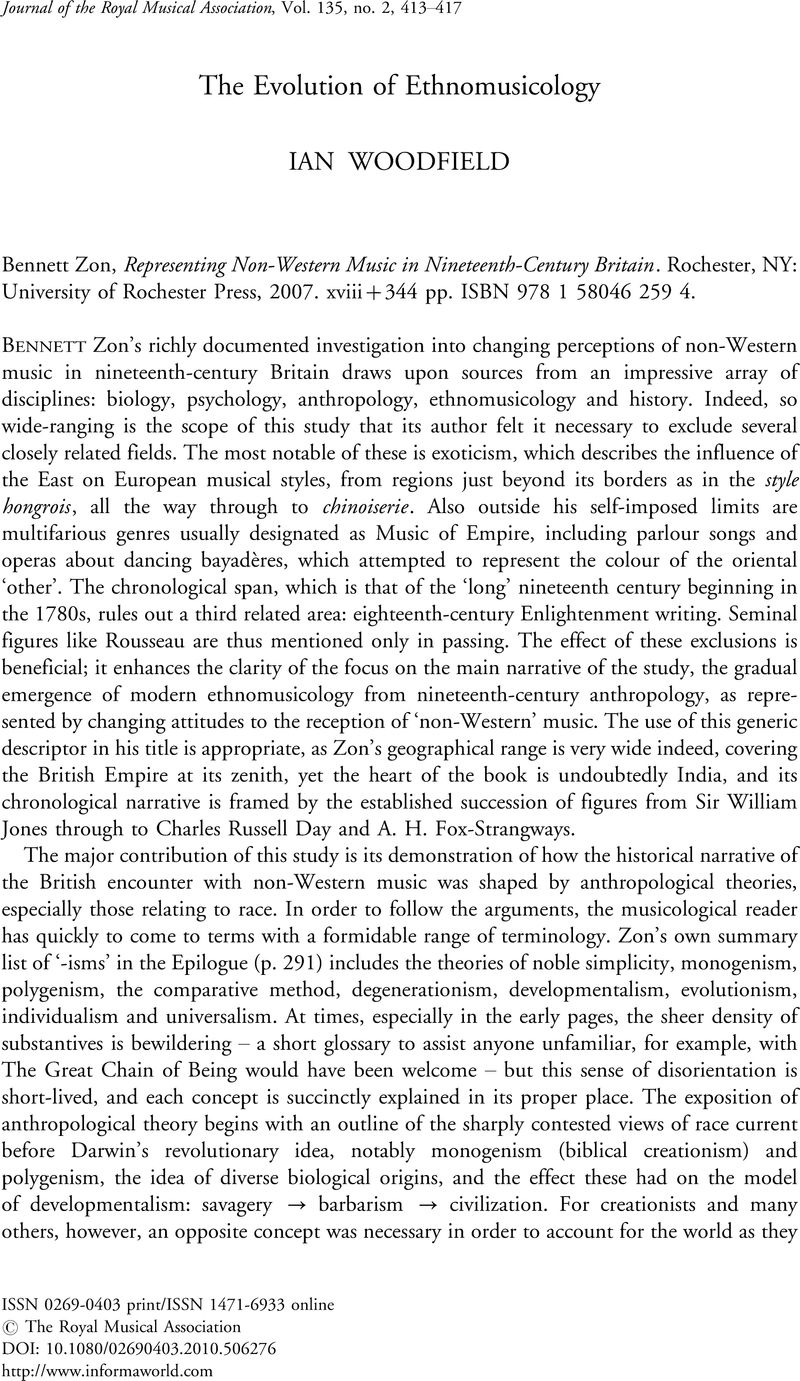No CrossRef data available.
Published online by Cambridge University Press: 01 January 2020

1 Frank Harrison, Time, Place and Music: An Anthology of Ethnomusicological Observation c.1500 to c.1800 (Amsterdam, 1973).
2 Robert L. Hardgrave, Jr, and Stephen M. Slawek, ‘Instruments and Music Culture in Eighteenth-Century India: The Solvyns Portraits’, Asian Music, 20 (1988), 1–92.
3 Joep Bor, ‘The Rise of Ethnomusicology: Sources on Indian Music c.1780–c.1890’, Yearbook for Traditional Music, 20 (1988), 51–73.
4 Gerry Farrell, Indian Music and the West (Oxford, 1997), 8.
5 Ian Woodfield, ‘The Hindostannie Air: English Attempts to Understand Indian Music in the Late Eighteenth Century’, Journal of the Royal Musical Association, 119 (1994), 189–211.
6 Nicholas Cook, ‘Encountering the Other, Redefining the Self: Hindostannie Airs, Haydn's Folksong Settings and the “Common Practice” Style’, Musical Orientalism in the British Empire, 1780s–1940s: Portrayal of the East, ed. Martin Clayton and Bennett Zon (Aldershot, 2007), 13–38.
7 Thomas Williamson, The European in India (London, 1813), caption to plate 15.
8 Fitzwilliam Museum, Cambridge, MS 380.
9 Stephen Jay Gould, ‘Introduction’ to Carl Zimmer, Evolution: The Triumph of an Idea (London, 2002), xi–xiv (p. xii).
10 Charles Russell Day, ‘Notes on Indian Music’, Proceedings of the Musical Association, 20 (1893–4), 45–66 (p. 45).
11 Martin Clayton, ‘A. H. Fox-Strangways and The Music of Hindostan: Revisiting Historical Field Recordings’, Journal of the Royal Musical Association, 124 (1999), 86–118.